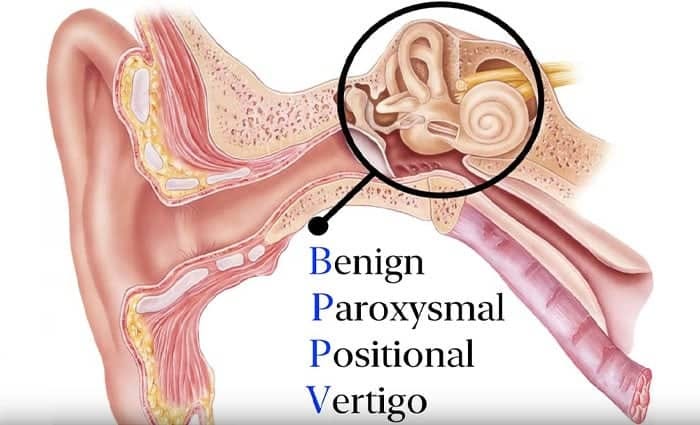BPPV Treatment in Langley
BPPV Treatment in Langley

Understanding BPPV: What is it?
Benign paroxysmal positional vertigo (BPPV) is a common inner ear disorder that affects balance. It is characterized by brief episodes of vertigo, a sensation of spinning or movement, that are triggered by specific head movements. BPPV is not a serious condition and it usually resolves on its own within a few weeks. However, the symptoms can be very disruptive and can sometimes lead to falls.
Symptoms of BPPV
The primary symptom of BPPV is vertigo, which is a sensation of spinning or movement. This feeling can be very intense and can last for several minutes. Other symptoms of BPPV may include:
- Nausea
- Vomiting
- Dizziness
- Loss of balance
- Nystagmus, which is a rapid jerking movement of the eyes
Causes of BPPV
BPPV is caused by tiny calcium crystals called otoconia that become dislodged from their normal location in the inner ear and move into the semicircular canals. The semicircular canals are responsible for sensing head movement, and when the otoconia move into these canals, they send false signals to the brain, which creates the sensation of vertigo.
The exact cause of otoconia dislodgement is unknown, but there are several risk factors that may increase your chances of developing BPPV, including:
- Head trauma
- Aging
- Inner ear infections
- Certain medications
- Meniere’s disease
The importance of early diagnosis and treatment
While BPPV may resolve on its own, early diagnosis and treatment can help to speed up the recovery process and reduce the risk of recurrence. Physiotherapists in Langley are trained to perform specialized maneuvers that can help to reposition the otoconia back into their normal location, effectively eliminating the vertigo symptoms.
BPPV treatment options
The primary treatment for BPPV is canalith repositioning maneuvers. These maneuvers are specialized head movements that are designed to help move the otoconia out of the semicircular canals and back into their proper place. Canalith repositioning maneuvers are typically very effective in relieving vertigo symptoms.
In some cases, other treatments may be used in conjunction with canalith repositioning maneuvers. These may include:
- Vestibular rehabilitation exercises: These exercises help to strengthen the balance system and improve coordination.
- Medications: Certain medications may be prescribed to help control nausea and vomiting.
Introduction to BPPV treatment in Langley
Langley offers a variety of experienced physiotherapists who specialize in the treatment of BPPV. These physiotherapists have the training and expertise to provide effective and personalized care.
Why choose BPPV treatment in Langley?
There are several reasons why you should choose BPPV treatment in Langley:
- Experienced physiotherapists: Langley physiotherapists have extensive experience in treating BPPV and have a proven track record of success.
- Personalized care: Langley physiotherapists take the time to understand your individual needs and develop a treatment plan that is right for you.
- Access to advanced treatments: Langley physiotherapists have access to the latest and most effective treatments for BPPV.
- Convenient location: Langley is conveniently located to serve residents of the Fraser Valley.
Expert BPPV physiotherapists in Langley
Langley is home to many experienced and qualified BPPV physiotherapists. These physiotherapists have completed specialized training in vestibular rehabilitation and are committed to providing their patients with the best possible care.
Divine Care Physiotherapy: A leading BPPV clinic in Langley
Divine Care Physiotherapy is a leading BPPV clinic in Langley. The clinic’s physiotherapists have a wealth of experience in treating BPPV and are known for their compassionate and personalized approach to care.
How BPPV physiotherapy works
BPPV physiotherapy typically involves a combination of canalith repositioning maneuvers and vestibular rehabilitation exercises. Canalith repositioning maneuvers are specialized head movements that are designed to help move the otoconia out of the semicircular canals and back into their proper place. Vestibular rehabilitation exercises help to strengthen the balance system and improve coordination.
Rehabilitation exercises for BPPV
In addition to canalith repositioning maneuvers, your physiotherapist may also recommend vestibular rehabilitation exercises. These exercises are designed to help strengthen the balance system and improve coordination. Some common vestibular rehabilitation exercises include:
- Head-shaking exercises
- Brandt-Daroff exercises
- Log roll exercises
Success stories: Real-life examples of BPPV treatment in Langley
Many people have successfully overcome BPPV with the help of physiotherapy treatment in Langley. Here are a few examples:
- “I had been suffering from BPPV for months and was starting to lose hope. But after just a few sessions


Comments
Post a Comment